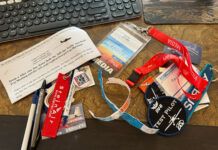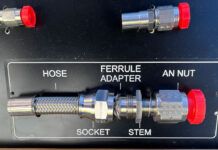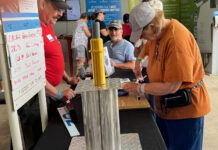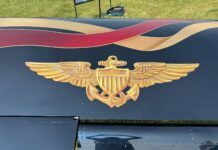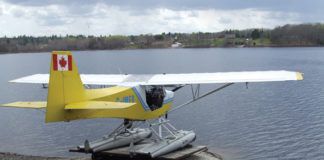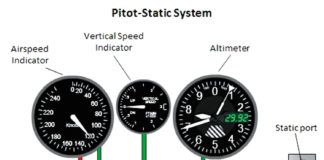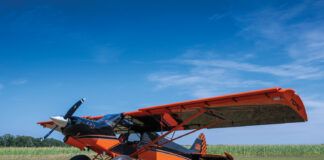No surprise that my first trip back to Oshkosh in years was a funny combination of beginner’s excitement and jaded journalist’s déjà vu. So much was basically the same—and remember that I’ve been coming to the event off and on since 1988—but there was enough that was new to make this one of the best shows I’ve experienced in a long time.
That said, the volume of raw news from this year’s AirVenture was more a trickle than torrent. We’re in the phase of this sport where the industry is mature and there is one dominant design, the Van’s RV, at least in terms of pure volume. As the design of homebuilts have shifted from wild-eyed inventors truly trying on “something new” to well-established companies creating kits that just about anyone with a budget and persistence can complete, the sense of blunt innovation seems to have left us. This is much less an indictment of where Experimentals have landed than an observation of the homebuilding life cycle.
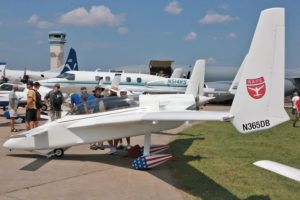
Nowhere was this more evident to me than standing around Boeing Square. This year featured Burt Rutan speaking several times during the show and his designs featured prominently in the main display area. I’ve done enough fiberglass work—mainly on the Pulsar that I built in the 1990s but also, later, on my Sportsman—to fully appreciate the challenge of “inside-out” moldless construction. Rutan’s ability to imagine, design, build, and document wild forms set imaginations alight in the 1970s. If you were sitting in a smoke-filled FBO in the ‘70s, looking out at dowdy Cessnas and Pipers on the ramp, the image of a VariEZE or Long-EZ in a magazine must have been truly invigorating. I have mad respect for Rutan as well as the builders who made his imaginings into real aircraft, and you can sense in his public talks a bit of frustration that today’s homebuilts are so mature, so safe in their design choices.
Moving on. Later in this issue, you’ll find Larry Anglisano’s avionics report from AirVenture, which follows the theme of there being no seismic news. I am curious about the acquisition of TruTrak by Honeywell to put it into the BendixKing product family. I have seen small, agile companies purchased by mega-glomerates with the idea of borrowing some of that free-spirited, we-can-do-it inventiveness for the good of the whole. It’s not uncommon for the small company to simply get subsumed into the larger corporate culture, but here’s to hoping that TruTrak can help BendixKing gain some traction among Experimentals.
Finally this: MOSAIC. There isn’t an aviation journalist in the land who isn’t tired of reporting on or watching the craziness that’s stemmed from the Boeing 737 MAX debacle. But the repercussions go further than inconveniences in the summer air travel, with Southwest and American canceling flights as they worked without dozens of aircraft.
That’s not our concern. Ours is: The FAA has been criticized for allowing Boeing to control too much of the certification process. The expectation is for the FAA to halt or even reverse any program that might be seen as loosening its hold on safety. I wouldn’t want to be the FAA staffer standing up in a meeting saying the agency should give the industry more rope.
And yet that seems to be happening. At AirVenture outgoing FAA administrator Dan Elwell (and currently deputy admin under Steve Dickson) discussed MOSAIC in terms that surprised me. Specifically, that it wasn’t dead on arrival. In fact, the program is moving forward in meaningful if not specifically revealed ways.
MOSAIC is a broad program to recast certification and approvals for non-commercial aircraft. It came as part of a plan to recast all of FAA Part 23 certification to be simpler (thus cheaper) and more reliable. Among the proposals in MOSAIC were an adjustment of the Light Sport Aircraft weight limit and a bump to four seats, to which I say, “Yay.” I was in this chair when LSA was announced, and it was clear the weight limit was both arbitrary and far too restrictive. I won’t suggest that the failure of the category to bring some 6000 new airframes into the world every year hinges on that, but the LSA limitations surely didn’t make life easy for the airframers. Any intelligent relaxation of those limits is a great thing.
Other parts of MOSAIC include permitting non-builder owners of Experimental/Amateur-Built aircraft to take a course to allow them to conduct the annual condition inspection. And, according to the EAA, MOSAIC would look into ways to formalize a program to allow “custom building” of aircraft that are ostensibly E/A-B designs. I don’t doubt there will be a burble of anger from those following the current rules to the letter, but the reality is that the customer looking to have an airplane built is not the same customer deciding whether to get a slow-built or quickbuild version of a new RV. Other parts of MOSAIC include the possibility of installing non-certified components (mostly avionics) into production-line aircraft not used in commercial operations.
I know most of you have heard all this before. Promises of big change, then the years go by. But the fact is that the FAA, even pushed along by EAA and AOPA, is not an agency that can move quickly. The fact that it hasn’t completely shut down MOSAIC in light of the 737 MAX traumas is good news for general aviation and our thriving part of it.

